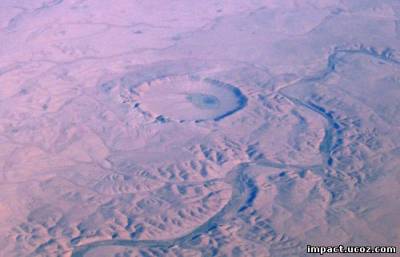Class = 0
Structure_name = Amguid
Country = Algeria (Algiers)
Continent_Ocean = Af
Lat = 26.087594°
Lon = 4.395097°
Diameter_km = 0,45
Age_Ma = < 0.1
Notes = http://impact.ucoz.com/KMZ0/Amguid.kmz
http://labmpg.sscc.ru/Impact/ab9.html- Зоткин И.Т., Цветков В.И. (1970). О поисках метеоритных кратеров на Земле. Астрономический вестник, No.1, Issue 4, С. 5-65
- Фельдман В.И. (1987). Каталог астроблем и метеоритных кратеров Земли. Метеоритика, Issue 46, б. 154-171
- Алексеев А.С. и др. (1991). Оценки частоты падения небесных тел
на Землю, исследование возможности заблаговременного их обнаружения и
изменения траекторий. Отчёт по НИР, АН СССР ВЦ, Новосибирск , 128 с.
- Марчук Ан.Г., Симонов К.В., Перетокин С.А. (2005). Выявление
возможных импактных кратеров на поверхности Земли методом обработки
цифрового рельефа. Всеросс. конф. АКО-2005, 3-7 октября 2005, г.
Санкт-Петербург? C. 241-244.
- Graham, Bevan and Hutchison (1985). Catalogue of Meteorites. 4th Edition
- Grieve R.A.F. (1987). Terrestrial impact structures. Ann.Rev.Earth Planet.Sci., Vol.15, p. 245-270
- Hodge, Paul W., (1994). Meteorite craters and impact structures of the Earth. Cambridge University Press , 122 pp.
- Jarmo Moilanen (2004). References.
- Osinski Gordon R. (2006). The geological record of meteorite
impacts. 40th ESLAB First International Conference on Impact Cratering
in the Solar System, 8-12 May 2006., Noordwijk,The Netherlands
Amguid is located in southwestern Algeria. Amguid formed in lower
Devonian sandstones, and has a diameter of 450m. These sandstones dip
outward within the crater walls, and become progressively steeper in the
upper parts of the wall. On the northwest side of the rim, the
sandstone beds have been overturned, and these beds dip gently in the
northeast part of the rim. The top of the rim seems to be covered by
blocks of sandstones that are several meters in diameter, and form a
nearly continuous debris blanket 100m from the rim. The center of the
crater is flat, and is filled by compacted eolian silts. The crater
walls do not have visible breccia veins or shatter cones Despite this,
planar deformation features were discovered in some quartz grains.
Intense deformation was also visible in some of the grains, as well as
fracturing. The fact that planar deformation features are observed so
rarely at Amguid are probably a result of the crater's formation in
sandstones, and of lower pressures that occur in the formation of small
craters. The age of Amguid is not well understood; the target rocks
constrain the age to somewhere between the present and ~350 million
years, but studies of the erosion of the crater suggest an age of
10,000-100,000 years.
Global Impact Studies Project


cm.
| 
Кратер "Амгид" (Марчук и др., 2005) |
|